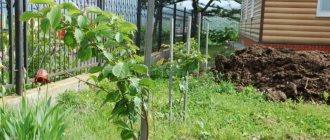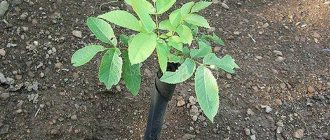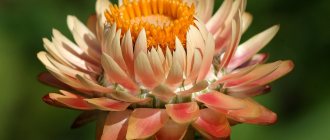Lilac is a cultivated woody shrub, unpretentious to growing conditions, brought to the post-Soviet space from Asia and China. Young lilac seedlings adapt well to transplanting into open ground at any time, while mature bushes are best planted in the fall, when the temperature is cool. The timing of planting lilacs is influenced by the phases of the moon indicated in the gardener’s calendar, the day of the week, climatic conditions and soil conditions. In order for lilacs to take root after transplantation, you need to correctly carry out agrotechnical measures according to the lunar calendar for 2020.
How do the phases of the moon affect
Even in ancient times, our ancestors noticed that the cycles of the night light affect many material processes associated with water. Thus, the ancient physician and medical expert Avicenna performed abdominal operations only during the full moon, because this improved the healing of wounds after surgery. The Scandinavians stabbed their cattle in the winter only on the young Moon, so that the meat would have less water and the muscle fibers would be dense. Socrates noted that the ebb and flow of the seas and oceans are associated with a two-week change in the fullness of the month.
It is best to plant lilac seedlings in open ground on the waxing Moon, since during this period the circulation of juices in the root system is minimal, if the radix is damaged, the wounds will quickly heal, and the loss of cellular fluid will be minimal.
Seeds and seedlings planted closer to the young Moon require less watering than those planted in the ground during the full month. Agronomists explain this effect by the flow of liquid in humus: the more light there is at night, the more moisture comes to the surface of the soil. Astrologers associate this phenomenon with the horary influence of the air and celestial signs of the zodiac on the germination of the embryo in the seed and the formation of bulbous buds on the roots.
PLANTING LILAC IN AUTUMN: VIDEO
How to plant ordinary lilacs in the fall? Step by step! #4
ORDER QUALITY AND CHEAP SEEDS AND OTHER GOODS FOR YOUR HOME AND GARDEN. PRICES ARE PRICEY. CHECKED! JUST LOOK FOR YOURSELF AND BE SURPRISED. THERE ARE REVIEWS. GO>>>
Below are other entries on the topic “Do-it-yourself cottage and garden”
- Autumn planting of raspberries using the bush method: Planting raspberries in the fall - how...
- Planting a fruit tree: main points: Proper planting of a fruit tree is...
- Apple tree: quick harvest after planting: MAXIMUM FAST HARVEST OF APPLES -…
- Caring for fruit tree seedlings after planting - questions and answers: THE SEEDLINGS HAVE BEEN PLANTED. BEGINNERS HAVE QUESTIONS...
- Climbing roses: 4 secrets of planting (Moscow region): PLANTING CLIMBING ROSES IN THE MOSCOW REGION...
- How I grow dogwood: Growing dogwood - my tips Childhood...
- Planting plums - according to all the rules!: Planting plums correctly In our gardens...
Subscribe to updates in our groups and share.
Conditions for growing common lilac
The first specimens of this tree were brought to the USSR from China, Vietnam and Korea. Wild lilac is common in Asia and Europe. In the 30s of the twentieth century, lilac varieties Triumph and Champs Elysees were brought to the Leningrad fruit nursery, but died due to the harsh winter. Surprisingly, the Asian shrubs quickly adapted to the conditions of central Russia and produced young shoots the very next year. As a result of breeding work, agronomist-breeders developed various species and varieties of lilac, which are divided into two large groups: European type and Asian. The European type includes more than 10 species and 40 varieties that bloom for a short time, but produce bright large flowers with a pronounced aroma. The Asian type of lilac blooms for a long time, with small flowers on short stalks.
Note! Varieties and species should not be confused. The Asian lilac species is a wild form that does not take root when transplanted in garden conditions, and the Asian 114/82 variety is widespread in the arboretums of Western Siberia.
A variety is an artificially bred group of plants that has a similar morphological, productive, and vegetative structure. The variety appears as a result of breeding work to improve the economically useful traits of local wild plants or existing varieties with low agronomic indicators. A species is an indivisible taxonomic unit, a community of plants formed in nature that belongs to the same family or genus. Man has no influence on the formation of the species; the species is created by nature.
Landing site requirements
The place for planting common lilac (a species that includes the most common varieties cultivated in Russia) is chosen to be sunny, not swampy, with rested, fertile soil. Syringaria should not be thickened; the distance between single bushes should be at least 3 meters. If it is planned to create a hedge from lilacs, then the young seedlings are trimmed to the shape of a topiary, then the distance from one root collar to another should be 1.7 - 2 m. For alley planting, the distance is reduced to 1 m. But with such a dense planting there will not be a rich flowering and large stems with flowers.
Lilacs must be protected from drafts, since non-winter-hardy varieties can freeze in February - March during the period of strong winds and snowstorms. You cannot choose low-lying areas and areas in which groundwater lies high - 1 meter or more. In the spring, melted snow will accumulate in the pits, so the lilac roots may rot from excess water. The area for planting this shrub should be well ventilated, be on a slight hill and have a good drainage system.
Types of planting depending on the type of seedling
The correct technology for planting the root seedling itself involves immersing the root collar in the ground for the first 14 days after planting in the ground. This will stimulate the strengthening of the roots and the branching of new appendages. But after 2 weeks, the neck is freed from the ground, otherwise the lilac may rot.
The grafted seedling is planted so that around the root collar there is a depression in the ground 10-15 cm in diameter by 5-7 cm in depth. This method of planting ensures that the adventitious vegetative organ will not produce excess growth with young shoots. Then all the forces of the lilac will be directed to the area with the grafted variety, and not to the formation of appendages.
Growing Tips
May be interesting Lunar calendar for central Russia for 2021 Favorable days for a gardener for 2021 for the Bryansk region Favorable days for a gardener for February 2021: table of days by the moon
During flowering, lilac looks good in a single planting. It is not advisable to plant two seedlings next to each other. The bushes grow quickly and soon form impenetrable thickets. Since lilacs do not bloom for long, other plants are planted nearby to maintain an attractive appearance: perennial flowers or ornamental shrubs. Successful neighbors for lilacs will be:
- hydrangea;
- decorative maple;
- mock orange;
- cherry;
- viburnum;
- coniferous trees.
Landing
For normal development of lilacs you need from 4 to 6 m of free space. To grow as a hedge, seedlings are placed at a distance of 1 m. Before planting, a hole is dug, the size of which exceeds the diameter of the root system of the seedling. The depth of the hole depends on the fertility of the soil. The poorer it is, the deeper they dig to add organic matter.
Drainage made of expanded clay or broken brick is laid at the bottom. Then mix the soil removed from the pit with 200 g of wood ash, 30 g of superphosphate, mature compost or rotted manure at the rate of 15 to 20 kg per plant.
Important!
Saplings with exposed roots are carefully examined. They should be flexible, not dry. If there are damaged areas, they are cut off, and the cut areas are sprinkled with crushed activated carbon. All dry and broken branches are cut off. 2 hours before planting, the seedling is immersed with its roots in warm water. To make the plant take root faster, it is treated with a growth stimulator.
In the middle of the planting hole, soil mixed with fertilizers is poured in the form of a small mound. A peg is driven in nearby for support. The seedling is placed on top of the hill and the roots are straightened. The support should be placed at a distance of 5 cm from the trunk. The remaining space in the pit is filled with fertile soil, periodically compacting the layers.
A seedling grown on a rootstock is positioned so that the grafting site is 2 cm above the ground level. This eliminates the formation of unnecessary growth. To obtain planting material for next year, the root collar is slightly deepened. In spring, new root shoots appear that can be used for planting.
After compacting the soil around the seedling, dig a ditch for irrigation at a distance of 50 cm from the trunk. 5 liters of warm water are spent on one plant. After planting, the tree trunk circle is covered with fallen leaves, sawdust or dry peat. The mulch layer is made 30 cm thick. It will protect the planted plant from frost in winter.
Benefits of autumn planting
The timing of autumn planting is limited to the last ten days of August and September. Planting seedlings in October can be fraught with freezing of the roots in the first sub-zero temperatures. Planting lilacs in open ground in the fall in 2021 will be successful in September. The main advantage of autumn planting is that the tree will not expend energy during the growing season, feeding leaves and producing flowers. In winter, all vitamins and minerals are concentrated as much as possible in the roots. Therefore, lilacs have a better chance of taking root when transplanted in autumn.
Interesting fact!
According to research by Russian agronomists, more than 95% of lilac seedlings take root when planted in autumn, and only 60% when planted in spring.
It’s good if the winter is snowy, then the bushes are covered with snow so that the ground under them does not freeze. Lilac is an unpretentious plant that does not require much care; the European type tolerates cold well, so the bushes do not need to be wrapped in covering material. It is better to plant lilacs early in the morning or in the evening, when the sun sets below the horizon. During these hours, ultraviolet radiation from the sun decreases.
Vaccination is a priority
Lilacs can be propagated in different ways. But it is best to graft using rootstocks - most often common lilac or its wild species, as well as plants from its family - ash or privet. Budding with an eye is done in the summer, after the bush has faded. In addition, lilac (compared to pear or apple trees) has a very thin cambial layer. Therefore, you need to be able to accurately connect the scion and rootstock with precision. Lilacs don't take cuttings well. And all because due to the abundant flowering and simultaneous growth of new shoots, the plant has practically no growth hormones and, accordingly, no energy left for reproduction. For a cutting to take root, it needs a lot of nutrients. A bush that is more than 10 years old cannot be cut by cuttings at all: it directs all its energies only (!) to flowering. Lilacs are also propagated by layering. The shoot is pinned to the ground, hilled up and constantly watered. But until the branch takes root (and this takes at least a year), do not separate it from the mother bush. You can, of course, sow seeds. They are collected at the end of November, stratified or sown before winter. Or they can be stored in the refrigerator and sown in the spring. But you will pick the first bouquet of seedlings no earlier than in 6-7 years. Seedlings grow slowly in the first years, so they are usually dug out from the sowing section after 2 years, and planted in the nursery “school” in the fall or early spring in one row at a distance of 20-30 cm from each other. If you want to grow a bush from a seedling, after planting, cut the stems to a stump. That is, leave only 5-6 cm above the ground to awaken the root buds.
Planting according to the lunar calendar, unfavorable days
The lunar planting calendar for lilacs contains a list of favorable days. For the convenience of gardeners, the calendar recommendations are summarized in a table.
| Favorable days of August | Favorable days of September |
| 1, 2 growing | 1 growing |
| 3 full moon | 2 full moon |
| 20-31 growing | 18-30 growing |
Planting days in 2021 for lilacs fall throughout August and September, but in central Russia it is better to start planting after September 20. Moscow region, Leningrad region, Volga region, Krasnodar region - in these regions you can start planting in the first days of the last month of summer.
You should not do gardening on the new moon and certain unfavorable days. New Moon in August on the 19th, in September on the 17th. Unfavorable days of September are associated with the fall of the Sun and tense aspects of Saturn and Mars. This trine negatively affects all flowers and shrubs. September 3, 4, 8, 12 are bad days for transplanting lilac seedlings.
Pests and diseases
Lilacs quite rarely suffer from diseases and pests, especially natural species. The development of diseases is promoted by improper care in the open ground.
Low air humidity and heat “attract” powdery mildew ( HOW TO FIGHT POWDERY MILDW IN THE GARDEN? ).
Deep planting promotes fusarium and vascular wilt, and a lack of potassium causes root rot, leaf spotting or necrosis. Excess nitrogen, acidic and excessively wet soil are common causes of rot on shoots or trunks.
- It is difficult to fight fungal diseases and bacterial rot, and viral diseases (leaf curl, mosaic, ring spot) and bacterial wilt are deadly.
If the leaves on the bush from top to bottom begin to curl, become lighter (spots) and fall off, becoming brittle, then it is better to uproot and burn. The soil is replaced or disinfected.
Bacterial necrosis
Symptoms of the disease are most noticeable in early to mid-August, when the leaves turn black and the tips of the shoots become brown. Gradually, the affected area increases.
Control measures. Collect and burn fallen leaves, damaged parts of the bush, and if the plant is severely damaged, it is better to dig it up and burn it.
To prevent the disease, it is important to destroy pests and disinfect cuttings before grafting so that the pathogen does not reach the lilac.
Lilac leaf miner
Brown spots appear on the leaves in June–July; they gradually curl up and wither.
Control measures. If only a few leaves are affected, cut them off and burn them. In spring and autumn, dig up the soil near the bush 15-20 cm deep, turning it over, but very carefully so as not to damage the roots.
Other common pests: various mites, scale insects.
Planting dates by region
The time for planting seedlings is influenced not only by the condition of the Moon, but also by the characteristics of the area where the planting is taking place. In Siberia, the Urals and the Far East, where the summer and off-season are short and the winter is long, planting dates are shifted closer to the end of September. Freezing of the soil is rare during this month, and the rainy season is already over. Hot summers with moderate rainfall promote deeper warming of the soil, so lilacs can be planted earlier.
In warmer regions, you can replant lilacs in August, but you need to know the schedule and forecast of precipitation for the near future when planting is planned. If a young shrub is flooded with rain, the roots will rot and the plant as a whole will die. If the summer in the central part of Russia turned out to be cool and cloudy, then it is better to replant lilacs in early autumn rather than in summer.
Nuances of proper care
In order for young lilacs to please their owners with the rapid growth and splendor of their inflorescences, it is necessary to properly organize their care. Proper care is based on compliance with the following rules:
- compliance with the watering regime - water young plants regularly during the first year of growth, then only in hot weather and during the flowering period;
- fertilizing - in the first year of growth is not required, then nitrogen fertilizers are applied in the spring, and phosphorus-potassium fertilizers are applied in the fall;
- pruning - this ornamental shrub needs pruning of young shoots, starting from the third year of growth of the bush. Pruning is carried out in the spring, before the buds grow, shoots and side shoots are removed. After the third year of growth, the main shoots are shortened, leaving at least 8 buds on them.
Care after landing
Together with the seedling, a strong peg is dug into the hole, which is left 30-50 cm above ground level. The base and middle of the lilac trunk are tied to the peg with natural twine. This is done so that during strong gusts of wind the lilac does not break or tilt to the side. After planting, lilacs need to be watered 2-3 times before going into winter. The bush is watered for the first time on the 7th day after transplantation. Subsequent times are done at intervals of 14-21 days.
When planting in autumn, lilacs are not fed with mineral fertilizers, are not treated for parasites, and the trunks are not bleached with lime. Thin lilac bark can get chemical burns from applying lime. Plants from the olive family are rarely attacked by insect pests, but have a high risk of developing fungal diseases if they are not properly cared for and if agrotechnological cultivation standards are violated. To prevent this from happening, do not plant lilacs in a shady area, do not allow the crown to thicken, and regularly loosen the soil.
Soil for lilacs. Soil requirements
Ideal soil should be fertile, well-drained, and have a neutral Ph.
Poor soils are not contraindicated, but then in order to grow lilacs you will need to help the plant with more intensive periodic feeding.
The shrub responds well to organic matter:
- application of rotted manure;
- slurry from a compost pit;
- bird droppings.
You can simply spread fertilizer under the bushes in the fall. Or you can shallowly loosen the soil under the bush and fill it with solution.
Fertilizer table, dilution method, application frequency:
| Fertilizer | Fertilizer to water ratio | Amount of fertilizers per 1 adult bush | Frequency of application |
| Urea | 50 gr. | 2-3 times per season | |
| Ammonium nitrate | 80 gr. | after the snow melts and every 25 days | |
| Mullein | 1:5 | 1-3 buckets | spring, autumn |
| Bird droppings | 1:10 | 1-3 buckets | spring, autumn |
| Slurry | 1:8 | 1-3 buckets | spring, autumn |
| Potash fertilizers | 30 gr. | spring, autumn | |
| Phosphorus fertilizers | 50 gr. | spring | |
| Nitrogen fertilizers | 50 gr. | spring |
If the soil is sandy or light, it is strengthened with chernozem or alumina. If it is heavy and clayey, dilute it with leaf humus or peat. Clay soils are completely unsuitable for planting lilacs. The roots do not receive enough oxygen and quickly rot. If you really want to plant shrubs on alumina, you can use an option with an artificial earthen embankment based on the principle of an alpine hill. The soil must be imported, with good air permeability.
If soils are acidified, they need to be neutralized. Suitable for this:
- dolomite flour;
- wood ash;
- lime.
Artificially reduced soil acidity tends to return to its natural level, so neutralization must be repeated periodically.
How to prune lilacs correctly
Lilacs are pruned like any other tree-like plants, only on the waning moon. At this time, the movement of natural terms in the tops is slowed down and occurs in the root system. For pruning, use pruning shears or garden shears. The equipment must be sharp and well sharpened. Do not use rusty tools. It is impossible to prune different types of plants with the same pruning shears without sanitary treatment.
Trim excess branches at an angle of 45º, trying to make an even cut. Those places through which tree sap is abundantly released can be covered with garden putty or special mastic, which is prepared at home. For 1 glass of water take 3 tbsp. corn starch, 3 tbsp. flour and 3 tbsp. PVA glue. The ingredients are mixed and gradually heated over the fire, stirring continuously. As the mixture heats up, it will begin to thicken. The resulting mastic is cooled and stored in a dark place at room temperature. A thin layer of healing liniment is applied to the place where the integrity of the bark is damaged. It is important to ensure that leaves and small debris do not stick to it during the cooling process.
Planting lilac seedlings in 2021 can be done from the beginning of August to the end of September, depending on the region. The planting period is influenced by the phases of the moon, zodiac signs, natural and climatic conditions and the region of planting. Autumn planting of seedlings has a number of advantages over spring work. You can prune lilacs on a debilitated Moon to minimize trauma to the area where the branches are cut. Agronomists have developed special varieties that are adapted both for Siberia and the Krasnodar Territory. Lilac is an unpretentious plant that is resistant to attack by insect pests, but is sensitive to fungal infections.
When to transplant lilacs
Theoretically, the transplant procedure can be performed at any time except winter. During the cold period of the year, the plant is in the sleep phase, it will not take root, and it can be difficult to dig the ground. It is considered optimal to transplant lilacs in the fall:
- flowering has ended, the crop smoothly enters the dormant phase, gradually stops growing, so even damage to the roots during transplantation is easily tolerated;
- Over the winter, the plant can adapt to a new planting site, take root, and produce abundant flowering in the spring.
If you move lilacs to a new place in the spring, then you need to do this before the budding phase begins. In addition, before the procedure begins, rains and frosts must be behind. In the fall, gardeners have a long period of time between the end of flowering and the onset of cold weather in order to move the bush to a new location without damage or stress to the plant.
Sources used:
- https://floristics.info/ru/stati/sadovodstvo/3680-siren-posadka-i-ukhod-v-sadu-obrezka-i-razmnozhenie.html
- https://glav-dacha.ru/svoevremennaya-posadka-sireni/
- https://mirogoroda.com/derevjya-i-kustarniki/posadka-sireni.html
- https://www.sb.by/articles/ray-derevo3105.html
- https://xn—-8sbfjxdb6aqohkkbn8h.xn--p1ai/stati/siren-posadka-i-ukhod-obrezka.html
- https://givoyles.ru/articles/uhod/pravila-posadki-i-uhoda-za-sirenyu/
- https://7dach.ru/silva/siren-630.html
- https://sornyakov.net/flowers/kogda-peresazhivat-siren.html
- https://doma-v-sadu.ru/sad/peresadka-sireni.html
Features of care in autumn, preparation for winter
Autumn plant care comes down to preparing it for winter. Bushes up to the age of 4 years should be mulched with a layer of peat or sawdust 10 cm thick, which helps prevent the roots from freezing. Also, when forming a tree, you need to wrap the plant trunk with burlap. It is advisable to whiten the trunk before winter. After 4 years of age, there is no need to mulch and insulate the bushes. It is enough to whiten the trunk, feed it and loosen the soil around it.
The best varieties for the Moscow region
There are a great many varieties of lilac. Here are the most common and beautiful:
- Ludwig Speth,
- Primrose,
- Beauty of Moscow,
- Red Moscow,
- Sensation,
- Amethyst,
- Dawn of Communism,
- Hope,
- Hydrangea,
- India,
- Swan,
- Lights of Donbass,
- Memory of Kolesnikov,
- Taras Bulba,
- Aucubafolia,
- Belle de Nancy,
- Charles Joly,
- Firmament,
- President Lincoln,
- Buffon,
- Palibin,
- Miss Canada.
Preparing the site and soil for planting
The place for lilacs needs to be open, protected from the wind and well lit. Lowlands are not suitable for planting plants, since it is impossible to avoid excessive soil moisture in them.
It is also necessary to take into account the depth of groundwater. They should not be closer than 150 cm from the surface. You should not plant lilacs near the walls of the house, as the overgrown plant will shade the windows. The minimum distance between the house and the bush should be at least 4 meters.
The soil needs to be neutral, as lilac reacts violently and negatively to increased acidity. Clay or sandy areas are not the best option for planting, since it will be difficult for the bush to take root on such soil. The ideal option is loam. If the soil is heavy, frequent loosening will be required so that the roots can breathe easily.
How to choose planting material
According to the botanical description, lilac is a deciduous shrub, reaching a height of 5-8 m. The genus includes 30 species and more than 2,300 varieties.
Gardeners value the plant for its large, fragrant inflorescences. Bushes can be grown both on rootstocks and without them. Self-rooted crops grow well in the temperate climate of the central regions of Russia. It is easier to care for such plants. They are more durable and stronger, do not degenerate into a wild form, and quickly recover after freezing. Bushes with bare roots should be immediately planted in a permanent place. Therefore, the time of purchase must be timed to coincide with favorable times for planting. Before purchasing, the seedling is carefully inspected. The roots should be undamaged, well branched, and the stems should be free of signs of diseases and pests. Seedlings no older than 3 years old and 50-70 cm high take root better. The diameter of the root lobe should be about 30 cm.
Is it possible to plant lilacs near the house? Lilacs near the house and in the house
There are many trees and shrubs that are not recommended to be planted in the yard, on the site and, especially, under the windows of the house. However, the unassuming shrub does not belong to this dangerous list. Quite the contrary, esotericists strongly recommend having this particular plant among your green “neighbors.”
- Lilacs growing near your home will become a real talisman against evil entities. It will not allow negative energy into the house and will free household members from unwanted effects on the aura if plants are planted along the facade. Bushes growing in the yard harmonize the interior space of the home, neutralizing mutual dissatisfaction and outbursts of negative emotions.
- Neighborhood with lilac allows secret talents to reveal themselves, and gives people of creative professions bursts of inspiration and work enthusiasm, awakens intuition, and sharpens their perception of reality.
- Families living under the protection of a wonderful plant are always surrounded by friends and well-wishers. Their home is filled with love and mutual sympathy, attracts with ease of communication and the bright joy of being, always open to talents and simply good people.
- You can find short-term grace in your home, even if you are unlucky and there is no lilac scent outside your window in the spring. It is enough to bring a bouquet of amazing flowers into your home, and your life will immediately change for the better. After all, a purple cloud on the table will protect you from any negativity. And if you place the vase in the bedroom at night, the lush brushes will definitely inspire prophetic dreams.











